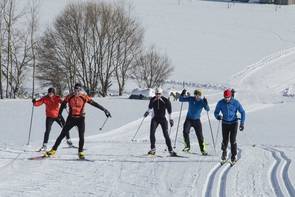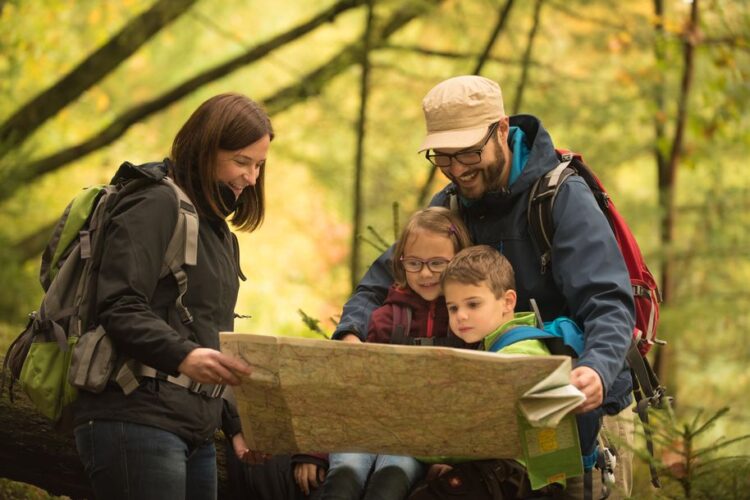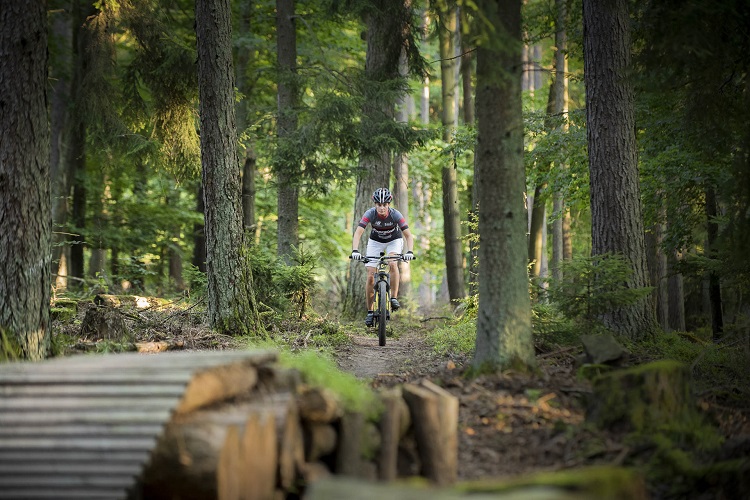Climate change adaptation: Spessart’s all-year around tourism strategy
Spessart is a German range of low wooded mountains, in the states of Bavaria and Hesse in Germany. Each year, the region has about 1.35 million overnight stays and over 13-million-day visitors. In winter, skiing is the main tourism attraction but the number of days with important snow cover is significantly decreasing due to the impacts of climate change. A strategy was designed to adapt the tourism sector by developing a 4-seasons tourism model.
Climate change impacts on tourism in the Hesse region
Climate change is acting faster in mountain areas compared to lowlands, across all Europe. The region of Hesse makes no exception: according to Hesse regional adaptation strategy, it already went through an increase of precipitation in autumn and spring and recorded a raise in temperatures of 1.3°C between 1951 and 2010 (while the increase at global level was 0.85°C). To investigate future changes, the Hesse region carried out climate simulations. Projections foresee an increase of the annual mean temperature of about 1.7°C by the middle of the century (2031-2060) in comparison to 1971-2000.
This strong increase of temperatures will affect the ecosystems of the region as well as mountain economy. Temperatures are expected to increase in particular during summer and winter, reducing de facto the snow cover. By the end of the 21st century, snow days in the Hesse region are expected to decrease by 20% to 40% – which will reduce the number of skiable days, decrease the attractiveness of the region in winter, and lower the economic viability of ski resort infrastructures. For cross-country skiing, the number of skiable days has already been reduced from 27 for the 2012-2013 season to 7 in 2018-2019. With 200,000 employments linked to the winter tourism sector in the region of Hesse, adapting the offer is crucial to maintain employment opportunities at local level.

Moving towards a 4-seasons model …
To cope with the effects of climate change, the area of Spessart which is covered both by the regions of Hesse and Bavaria, decided to develop a 4-seasons tourism model.
Since 2016, Spessart Tourism and Marketing Company, the local tourism office, has changed the way it promotes the area to valorise the activities available during each season. The aim is to showcase the assets of the area, such as close natural spaces, strong cultural heritage and regional cultural identity of local communities and businesses. To ensure a successful transition by maintaining attractiveness, Spessart Tourism and Marketing Company intends to target new tourist profiles, like hikers, mountain bikers and tourists interested in well-being and cultural heritage.
To better reach out to these new profiles of tourists, the following actions were also carried out:
- Removal of one of the three ski lifts of Spessart resort, of no further use in the winter.
- Use of remaining ski lifts in winter if there is enough snow and during summer for mountain bikers and hikers.
- Creation of new mountain trails for biking and hiking.
New communication of tourism stakeholders, focusing on all year-long activities and positioning the region as a place to experience nature and forest-based activities.
… thanks to a consultative process
The decision to turn towards a 4-seasons tourism model was not a unilateral choice from Spessart Tourism and Marketing Company, it was made in collaboration with stakeholders from the tourism industry. The consultative process took into consideration the interests of local companies and potential cooperation partners, for instance hosts, providers of leisure facilities, municipalities, and businesses. Together, they agreed that reducing the dependence on winter sports and developing tourism all-year round was a promising strategy for the future of the territory.
Likewise, the choice to focus on new tourist profiles, like hikers, mountain bikers and tourists interested in well-being and cultural heritage, was not made randomly. A market research study revealed that Spessart had interesting geographical assets, in particular the proximity to large cities like Frankfurt, Würzburg Darmstadt and Mainz, which enables people to visit the area for the weekend. Workshops were organised with these potential visitors, and it resulted that these tourists would be families, culture or nature-oriented city breakers, active tourists and people interested in quality-oriented experiences.

